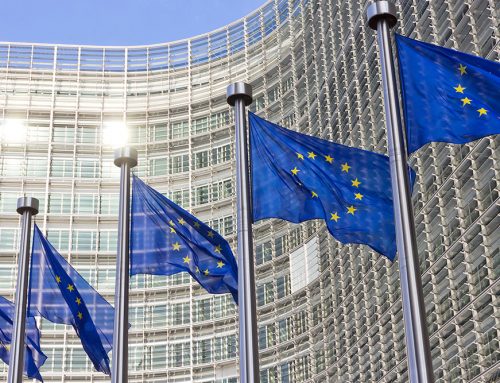On 1 January 2014, the population of the EU28 was estimated at 507.4 million, compared with 505.7 million on 1 January 2013, according to Eurostat, the statistical office of the European Union. As a long-term trend, the population of the countries making up the EU28 has increased by around 100 million since 1960 (from 407 million to 507 million).
In 2013, 5.1 million babies were born in the EU28. The crude birth rate was 10.0 per 1 000 inhabitants, down from 10.4‰ in 2012. The highest birth rates were recorded in Ireland (15.0‰), France (12.3‰), the United Kingdom (12.2‰), Sweden (11.8‰) and Luxembourg (11.3‰), and the lowest in Portugal (7.9‰), Germany,Greece and Italy (all 8.5‰) and Romania (8.8‰).
There were 5.0 million deaths registered in the EU28 in 2013. The crude death rate was 9.9 per 1 000 inhabitants, stable compared with 2012. The highest death rates were observed in Bulgaria (14.4‰), Latvia (14.3‰), Lithuania (14.0‰), Hungary (12.8‰) and Romania (12.4‰), and the lowest in Cyprus (6.0‰), Ireland (6.5‰),Luxembourg (7.0‰), Malta (7.6‰) and Spain (8.3‰).
Consequently, the highest positive natural change of the population (the difference between live births and deaths expressed per 1 000 inhabitants) was registered in Ireland (+8.5‰), well ahead of Cyprus (+4.7‰), Luxembourg (+4.2‰), France (+3.6‰) and the United Kingdom (+3.2‰). Thirteen Member States had negative natural change, with the largest in Bulgaria (-5.2‰), Latvia (-4.0‰), Lithuania (-3.9‰), Hungary (-3.6‰), Romania
(-3.5‰) and Germany (-2.6‰).
Population increase in fifteen Member States
In 2013, the population increased in fifteen Member States and decreased in thirteen. The largest increases due to natural change and net migration were observed in Luxembourg (natural change +4.2‰ and net migration +19.0‰), Malta (+1.9‰ and +7.6‰), Sweden (+2.4‰ and +6.8‰), Austria (0.0‰ and +6.5‰), the United Kingdom (+3.2‰ and +3.3‰) and Denmark (+0.6‰ and +5.3‰), and the largest decreases in Latvia
(-4.0‰ and -7.1‰), Lithuania (-3.9‰ and -5.7‰), Cyprus (+4.7 and -13.9‰), Greece (-1.6‰ and -4.7‰), Portugal (-2.3‰ and -3.5‰), Bulgaria (-5.2‰ and -0.2‰) and Spain (+0.8‰ and -5.5‰).
Eurostat news releases on the internet: http://ec.europa.eu/eurostat
Follow Eurostat on Twitter: http://twitter.com/EU_Eurostat


